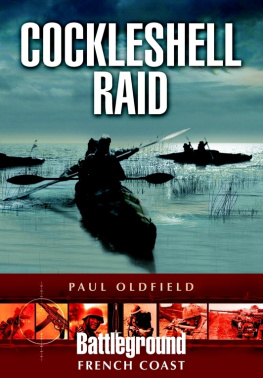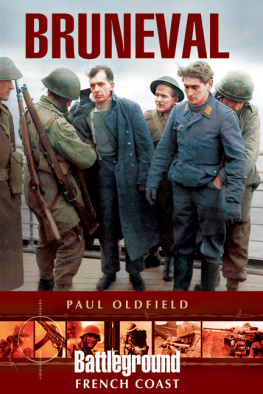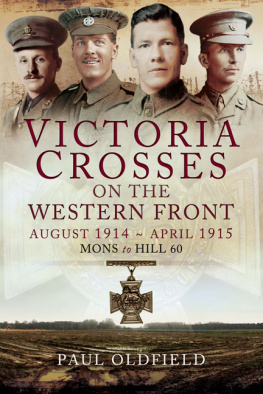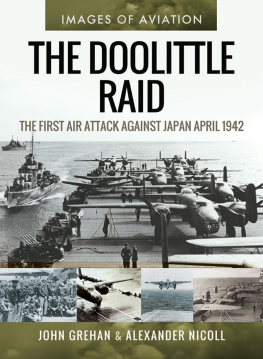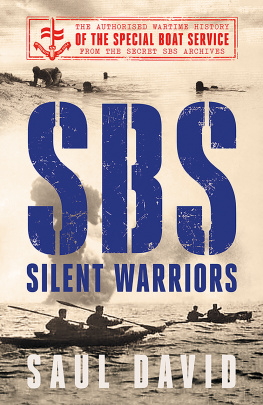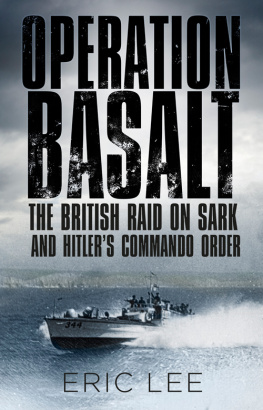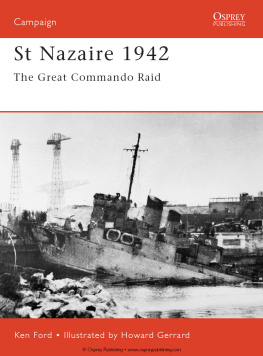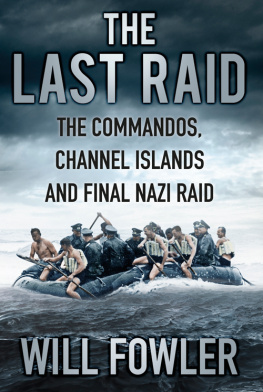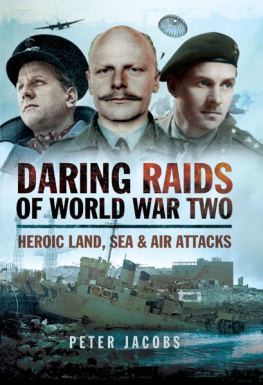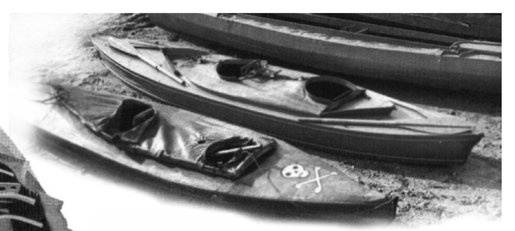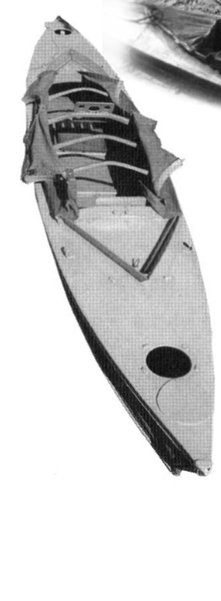Appendix I
COCKLE MK.II
RMBPD was not unique in using canoes. Other units included the Special Operations Group in South East Asia, the Combined Operations Pilotage Parties, Detachment 385, Special Boat Sections of the Commandos, Force 136 (SOE in Asia), Small Scale Raiding Force (62 Commando) and SOE. Upwards of 4,800 canoes (Cockles) were produced during the war, of which at least 1,127 were Mk.IIs.
There were very few canoe manufacturers in Britain in 1939. One was Folbot Folding Boats Ltd of London, but in July 1942 there were only 20 Folbots in Britain and they were in poor condition. At that time a requirement existed for at least 100 two-man canoes. The original Cockle Mk.I, produced by Cavender and Clark in Cambridge, was an improvement, but had a number of limitations, including being fragile and prone to leaking. Although the Cockle Mk.I had limitations in 1942, it developed alongside the Mk.II and there were ultimately seven separate versions; it was in service until the early 1960s. When the staff requirement was produced for a new canoe, it coincided with Fred Goatley supplying drawings incorporating most of the specifications. Goatleys design, with input from Haslar, ultimately became the canoe selected for the Frankton raid, the two-man Cockle Mk.II.
A comparison of the Cockle Mk.I and Mk.II.
The Fred Goatley designed Cockle Mk.II, as used on the Frankton Raid viewed from the stern. Note the hatches for erecting the bow and stern stays, the open waterproof canvas spray covers, rigid plywood deck, breakwater and wooden seats.
The final version was semi rigid with sides of canvas or rubberised fabric. It weighed 40 kgs and was able to carry 220 kgs (two men plus 68 kgs of equipment). It was 4.5m long, beam 72 cms, depth 32 cms and collapsed depth 16.5 cms. The dimensions given for the Mk.II vary between sources these are from Cockleshell Canoes by Quentin Rees as the depth of his research indicates they are the most reliable.
The Cockle Mk.II was decked with one-eighth ply, as was the base, which also had runners to allow it to be dragged over sand or shingle. The deck was held up by eight internal hinged stays at the bow, stern and three on each side. The cockpit had a waterproof canvas cover held together along the centre line with spring clips, which disengaged if the crew had to get out quickly. The crews jackets were elasticated to fit around the circular cockpit cover, making it almost watertight. A folding breakwater on the foredeck helped to deflect waves.
The crew sat on wooden seats an inch above the base, with a wooden backrest. A compass was mounted on the foredeck inside the breakwater. The No.1 sat forward and the No.2 copied what he did. The paddles were double, but could be divided into two singles when there was danger of being seen. This reduced the silhouette and made less noise. When doubled the paddle blades were offset by 90 to present a smaller silhouette and reduce wind resistance.
The pilot Mk.II was inspected by Haslar on 30 April and underwent a brief test from Saros Folly Works at Whippingham into the River Medina on 13 May. Having been delivered to CODC at Eastney, Haslar tested it alone next day, loaded with 68 kgs ballast and raced it against the Mk.I in the afternoon. In the evening he tried the Mk.II with 227 kgs ballast for a full load test. On 15 May the Experimental Party tested the Mk.II by flooding it and giving it some rough treatment, managing to break the forward deck beam before it was returned to Saro for modifications. Haslar asked for a small bilge pump, operated by the No.2s knee, to be fitted and designed a sailing rig. However, neither was ready in time for the Frankton raid.
On 19 June, a comparison of relative merits was made with the Mk.I. The Mk.II was 4.5 kgs lighter, assembly was much more rapid, it was more robust and could be picked up by the ends loaded. However, it was less comfortable, less stable, slower and more difficult to stow in a submarine. These negative points were addressed in the next version. Trials with the submarine HMS Unbeaten , showed that the Mk.II could be widened by 4 cms to increase stability.
The later versions of the Mk.II were very stable, but in rough water had to be kept head to the waves. Unlike an Eskimo kayak it was not possible to roll it back once capsized. The crew had to swim alongside, try to flip it over, bale it out and then climb in over bow or stern. There were buoyancy bags at the bow and stern to keep it afloat even when swamped. There was a shelf forward on which to stow items that needed to remain dry. Canvas pockets were provided inside to keep maps and charts handy. It was standard practice to rest for five minutes in the hour, during which they would bale out and make any adjustments necessary. In company with other canoes, they would raft up during these breaks and the leader would issue instructions for the next hour.
Despite Saro carrying out the development work, the majority of Cockle Mk.II production was sub-contracted to Parkstone Joinery (750) and Messrs Tyler of Griffins Mill, Stroud (100). The Cockles used on Frankton were six of the 26 produced by Saro at the Folly Works at Whippingham, East Cowes; they cost 160 each. In 1951, Captain Bruce and Corporal Johnny Litherland used a Mk.II Cockle in the Devizes-Westminster canoe race; they were the first to finish in thirty-four hours, the next team taking six hours longer. The Mk.II was superceded by the Mk.II** three-man canoe, which was also designed by Fred Goatley.
Appendix II
EQUIPMENT AND CLOTHING
Each canoe carried:
Three sets of paddles.
Bailer and sponge.
Buoyancy bags fore and aft.
Depth sounding line.
Repair bags.
Charts, P8 Compass, monocular (one per two canoes), protractor.
Dim red torches (Note 1).
Silent Sten Gun developed by Royal Small Arms Factory was in use by special forces for decades after WW2.
Camouflage net and cream.
Waterproof watch.
Wire cutters.
Matches.
Silent Sten one each with Haslar and Mackinnon plus four magazines.
Two x 69 grenades (Note 2).
Eight Limpets, fuses, placing rods (58.75 extended, 15.5 folded), spanner.
Holdfast.
Cable cutter and wire cutter charges (Note 3) one each per Division.
Ten days compact rations (Note 4), five hexamine cookers, 5 pint cooking pot.
2.5 gallons water, water-sterilizing tablets.
Benzedrine, field dressings, iodine, morphia, foot powder, cough lozenges, laxatives.
No.69 Grenade made of Bakerlite was less hazardous to the thrower than the No.36 Mills Grenade.
Bags containing personal items:
Toothbrush and paste, towel, seawater soap, razor and a shaving brush per canoe.
Felt soled boots to replace gym shoes and waders on land. Change of socks and pants, spare laces.
Roll neck sweater.
Spare gloves.
Cigarettes and matches.
Each man had escape bags containing:
Binoculars, torch, watch.
V-Victory match books a means of persuading locals of their identity, but also known to the Germans to ensure proper treatment.

